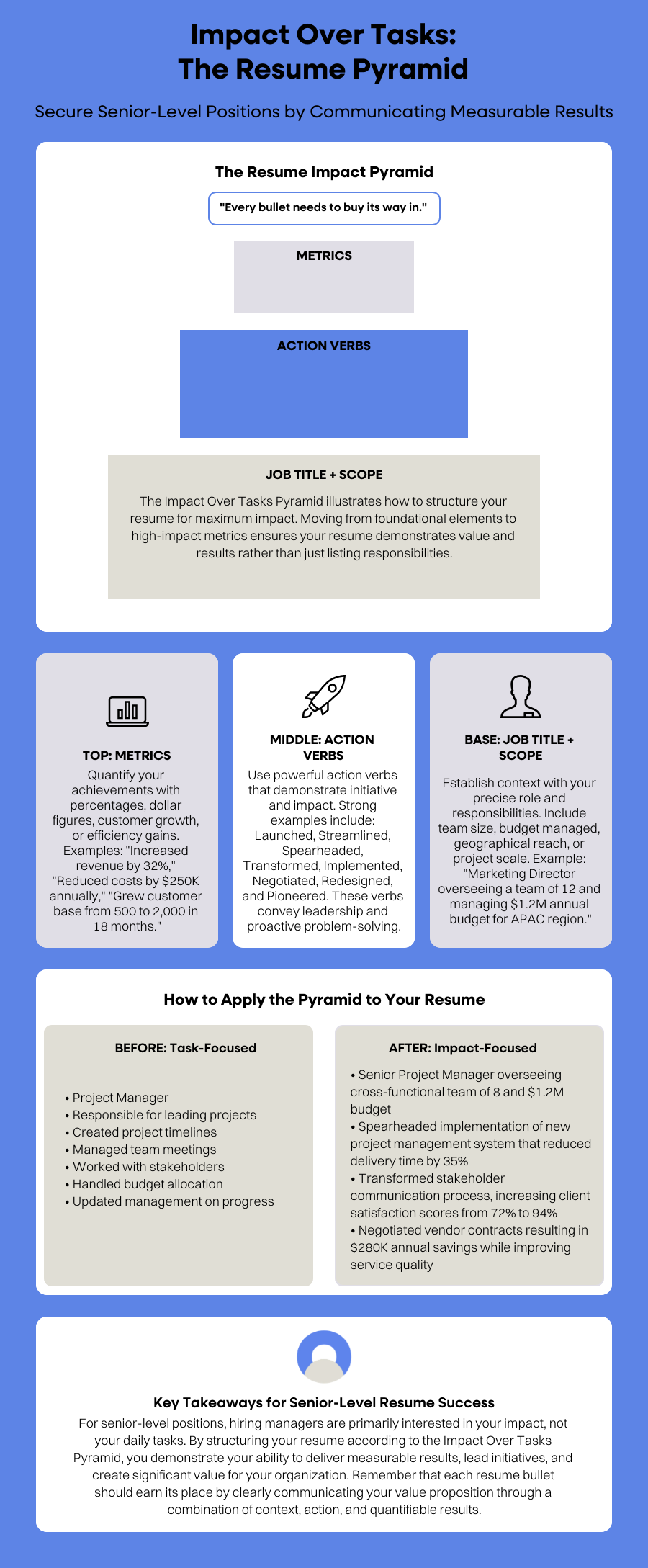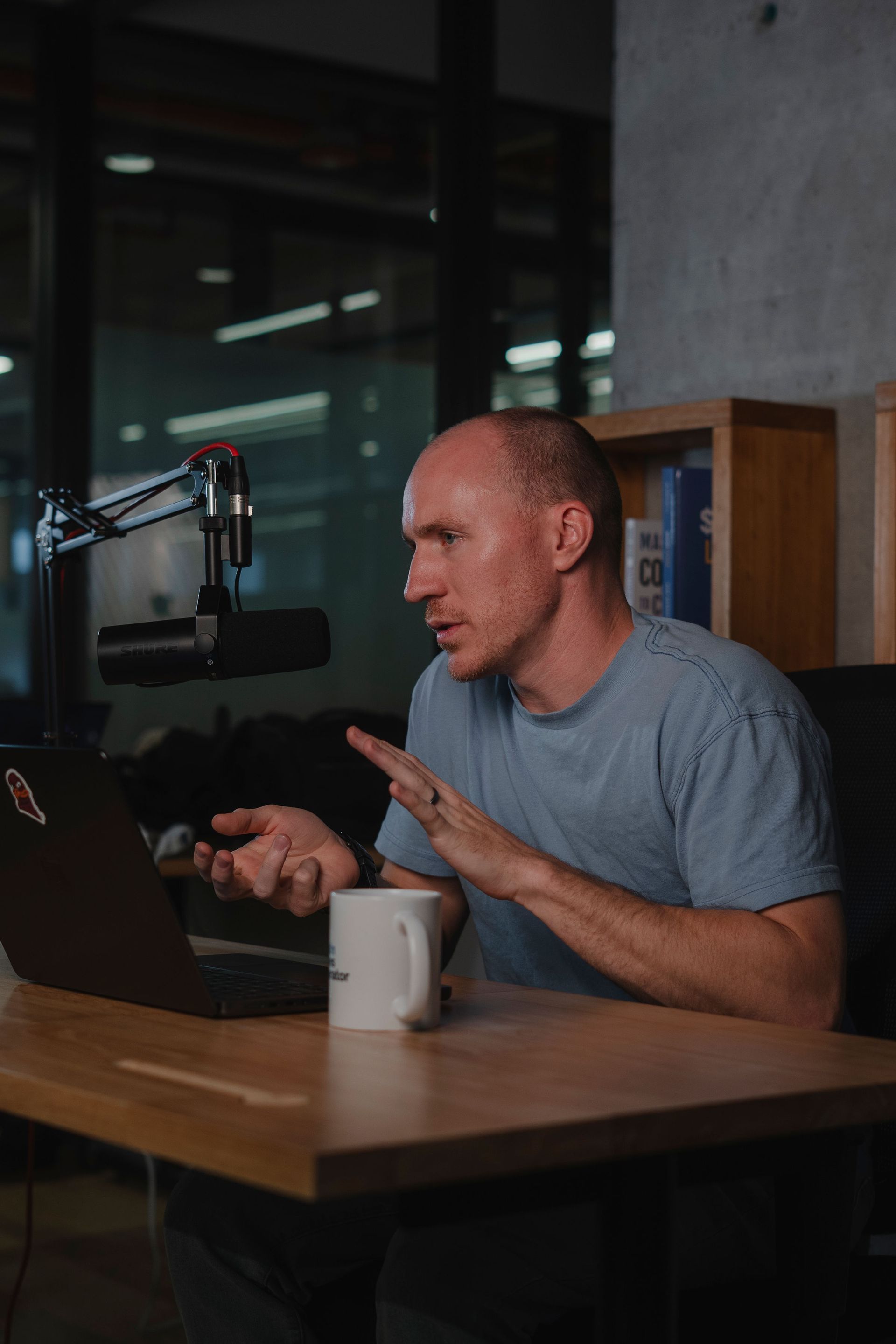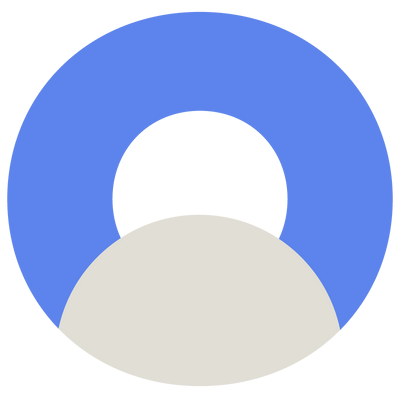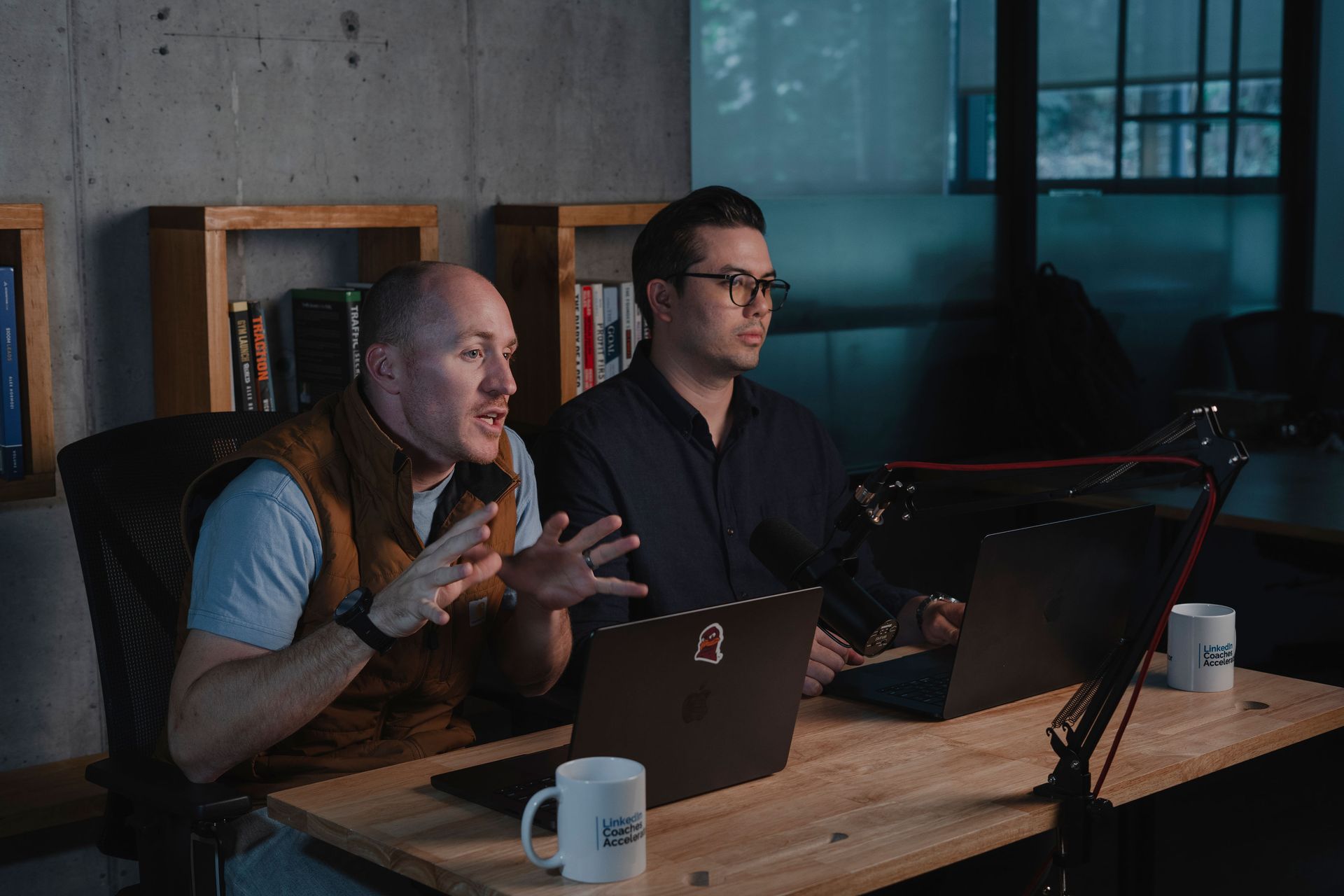How to Avoid the Most Common Resume Pitfalls: Essential Tips for Job Seekers
TL;DR
- Tailor your resume to the job description with relevant keywords (don’t copy/paste).
- Avoid fluff like headshots, skill ratings, objective statements, and unrelated info.
- Stick to one page (recent graduates) or two pages (experienced professionals).
- Keep formatting simple: 1–2 fonts, bullet points, clean spacing, and no clutter.
- Use a professional email and phone number; skip personal info and full URLs.
- Structure clearly: summary, skills, work experience, education.
- Focus on results, not duties, using action verbs and metrics.
- Proofread thoroughly; grammar mistakes are resume killers.
- Bottom line: Show value, not just experience.
First Impressions Start with Contact Information & Readability
Let’s start with one of the most common resume mistakes: poorly formatted or outdated contact information.
- Include a current phone number.
- Hyperlink your LinkedIn profile, don’t paste full URLs.
- Use a professional email (firstname.lastname@gmail.com is fine).
- Skip personal details like home address, marital status, or age. Many employers don’t want this info, and it can introduce bias.
When it comes to formatting:
- Use no more than three font sizes across the resume.
- Use bullet points, clear headings, and generous white space.
- Stick to one or two fonts (Arial and Times New Roman are solid choices).
- Avoid grammar mistakes by proofreading multiple times, using AI, or having a family member do it.
As someone who’s hired at companies like Boeing and Amazon, I’ve seen thousands of resumes, and I can tell you this: If your layout looks like a legal contract, I’m out. The goal is clarity, not complexity.
Writing Work Experience That Gets You Hired
This is where job candidates often lose traction. Most resumes simply list job responsibilities, but employers are looking for impact, not just tasks.
Here’s how to fix it:
- Focus on what changed because of your effort, not just what your title required.
- Start each bullet point with an action verb (Managed, Built, Launched, Streamlined).
- Quantify wherever possible; dollar amounts, percentages, and metrics help validate your claims.
Instead of:
“Responsible for managing a team”
Try:
“Managed a team of 8, reducing customer churn by 22% in six months”
Even if your past work experience doesn’t align directly with the current job description, there are often transferable key skills to highlight. Problem-solving, leadership, and initiative matter across every industry.
And one tip I give every coaching client: Cut the first-person pronouns. “Managed” reads cleaner than “I managed.” It’s a small change that improves readability and professionalism.

Describing Job Responsibilities with Precision
When listing job responsibilities, the way you write them can either help or hurt your chances. Here's how to ensure you're avoiding the most common resume pitfalls when writing this section.
Avoid Copy-Paste Resume Mistakes
- Don’t paste the original job description into your resume.
- Recruiters and hiring managers can spot this instantly.
Instead, personalize your bullet points to describe your accomplishments.


Use Job Description Keywords Strategically
- Only use keywords that align with your actual experience.
- Mirror important phrases from the job posting, like “project lifecycle management” or “process automation.”
- This helps pass applicant tracking system (ATS) filters and signals alignment to recruiters.
Make Every Bullet Point Count
Strong examples:
- “Increased revenue by $3.2M in 12 months through a new regional partnership.”
- “Improved process efficiency by 40% via automation in procurement workflows.”
Each bullet should show results. If it doesn't, cut it. Every word needs to justify its place.
Key takeaway: Everything needs to buy its way on by being relevant and impressive.
Common Resume Mistakes to Avoid
Over the past 13+ years, I’ve seen every version of what not to do. Here are the top resume mistakes that hold job seekers back:
- Objective Statements → We know you want the job. Use a summary to explain your value instead.
- Unproven Soft Skills Lists → “Communication” means nothing without context.
- Excessive References or Publications → Move these to a separate document.
- Lack of Accomplishments → Hiring managers want outcomes, not just tasks.
- Overly Long Resumes → 3+ pages is too much. Two is the absolute max.
- Overuse of ‘We’ → Show what you accomplished, not just the team.
- Personal Info → Leave off address, gender, age, marital status, etc.
- Grammar Mistakes → They’re resume-killers. Always proofread.
- Headshots → Too much bias risk. Use LinkedIn for your photo.
- Skill Ratings → Ranking yourself 5 stars in Excel isn’t helpful.
- Font Overload → No more than 2 font types and 3 sizes.
- Full URLs → Hyperlink LinkedIn or portfolio pages.
When writing resumes, your goal is to de-risk the reading experience for recruiters. Help them see your value fast. That’s how you move forward in the hiring process.
Resume Format and Length: Keep It Clean and Focused
Avoid common resume mistakes related to structure, format, and length with these guidelines.
Rule of thumb:
- One page for recent graduates or early-career professionals.
- Two pages max for experienced professionals with more complex work history.
Structure matters. Here's the layout I recommend:
- Professional summary - Use this space to highlight your strengths and qualifications.
- Work experience - Focus on results and accomplishments, most recent first.
- Education & certifications - Relevant to the role, concise, and current.
- Skills and tools - Include only those relevant to the position.
Design for readability:
- Use clean fonts like Times New Roman or Arial
- Space your content using bullet points and headings
- Don’t crowd the page, leave room for the reader to breathe
Most hiring managers spend 10 seconds or less on an initial scan. Common mistakes like dense paragraphs or tiny fonts guarantee you’ll be skipped.
Grab my free resume template to make sure your resume is structured for maximum impact.

Frequently Asked Questions (FAQ)
Q: Should I include a cover letter with my resume?
A: Yes, if the job posting allows for it. A tailored, well-written cover letter can demonstrate your interest and add context to your accomplishments. Just make sure it doesn’t repeat your resume verbatim.
Q: Do I need to include every job I’ve ever had?
A: No. Only include relevant work history. Focus on positions that highlight your skills and qualifications for the role you’re targeting. Older roles or those unrelated to your current goals can often be removed or condensed.
Q: How do I handle employment gaps on my resume?
A: Be honest and brief. You can address employment gaps in a one-line explanation (e.g., “Sabbatical for family care,” or “Professional development and certification training”). If needed, expand further in your cover letter or interview.
Q: What file format should I use when submitting my resume?
A: PDF is the safest format for maintaining layout and readability. However, some applicant tracking systems (ATS) prefer .docx files. Check the job application instructions to confirm.
Q: How far back should my resume go?
A: Typically, limit your resume to the past 10–15 years unless earlier experience is directly relevant to the job. Older roles can be summarized or listed under an "Additional Experience" section if needed.
Q: Should I include internships or volunteer work?
A: Yes, especially if you’re a recent graduate or are changing industries. Internships and volunteer roles can demonstrate transferable skills, work ethic, and industry knowledge.
Q: What’s the best way to list certifications or training programs?
A: Include a “Certifications” or “Professional Development” section. List the certification name, issuing organization, and date of completion. If it's relevant to the role, it belongs on your resume.
Q: Can I use a resume builder or template?
A: Yes, but proceed with caution. Some templates are overly designed and not ATS-friendly. Use clean, professional templates that prioritize readability and allow you to control the layout.
Q: Should I include references or “References available upon request”?
A: No. References should be kept on a separate document and only shared when asked. That line wastes valuable space; replace it with something that adds value.
Q: What’s the biggest mistake most job seekers make?
A: The biggest mistake? Not tailoring their resume to the job. Sending a generic resume that doesn’t align with the job description is one of the most common resume pitfalls, and it keeps great candidates from getting noticed.
Final Resume Writing Tips for Job Seekers
- Tailor every resume to the job you’re applying for.
- Quantify your results; use data to explain what you accomplished.
- Include keywords from the job description (honestly and accurately).
- Proofread three times; grammar mistakes can disqualify strong applicants.
- Cut irrelevant content. If it doesn’t help you get the interview, it doesn’t belong.
Your resume isn’t just about past responsibilities, it’s about showing what you’ve delivered, and what you’ll bring to the next company.

The Bottom Line
Everything needs to buy its way onto your resume by being relevant and impressive.
Whether you’re targeting a single job, shifting industries, or reentering the workforce after time away, your resume should reflect clarity, relevance, and measurable impact.
I’ve coached hundreds of candidates through this process. The resumes that win interviews are the ones that make the reader’s job easier, and prove value with precision.
I am a hiring manager and career coach with 13+ years of experience at companies like Boeing and Amazon. I help professionals at the Senior, Principal, and Director levels build standout resumes, navigate job searches, and prepare for high-stakes interviews.
If you're a senior-level professional looking to take the next step in your career, apply now to work with me.







